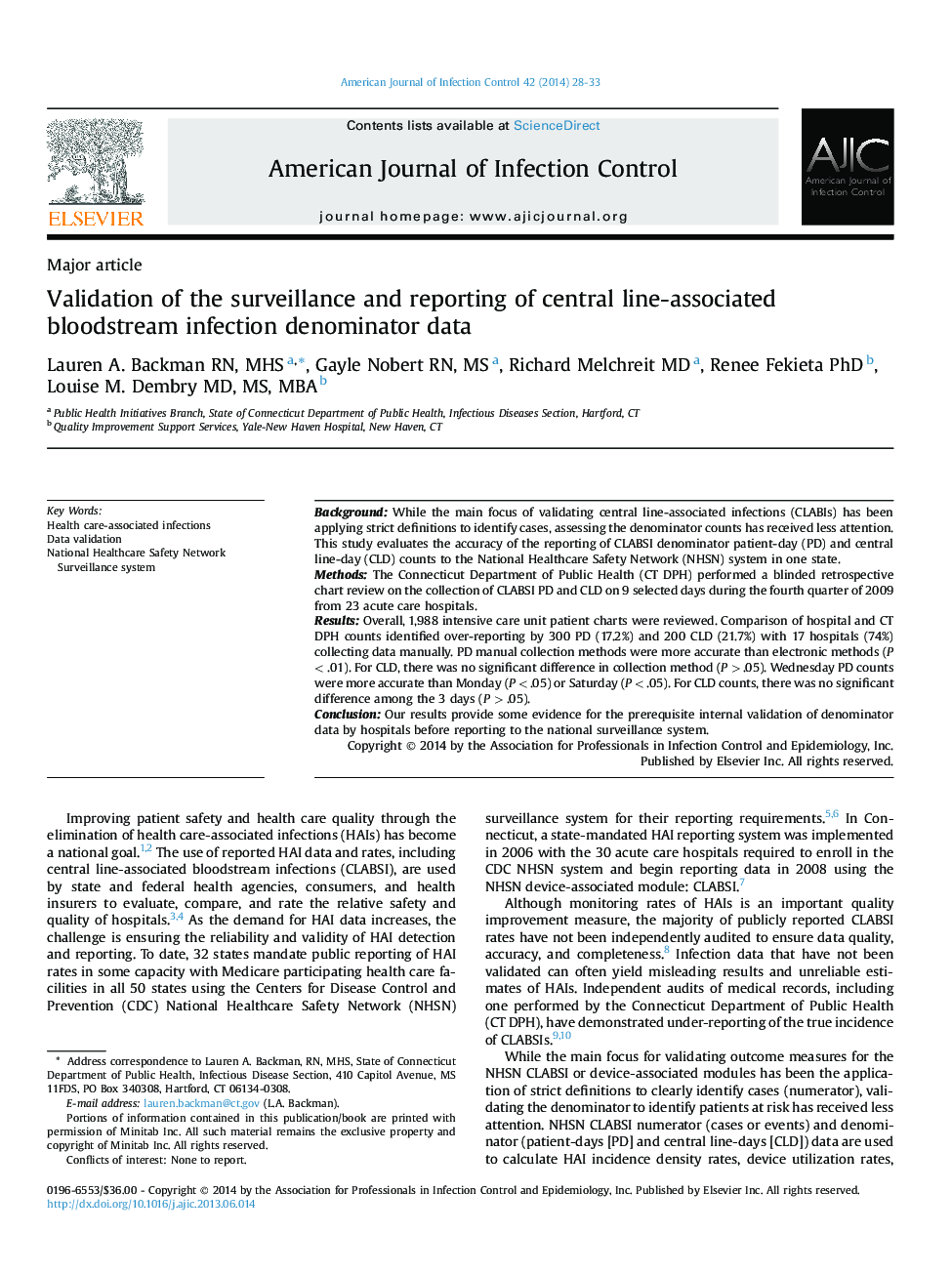| کد مقاله | کد نشریه | سال انتشار | مقاله انگلیسی | نسخه تمام متن |
|---|---|---|---|---|
| 2639443 | 1563491 | 2014 | 6 صفحه PDF | دانلود رایگان |
BackgroundWhile the main focus of validating central line-associated infections (CLABIs) has been applying strict definitions to identify cases, assessing the denominator counts has received less attention. This study evaluates the accuracy of the reporting of CLABSI denominator patient-day (PD) and central line-day (CLD) counts to the National Healthcare Safety Network (NHSN) system in one state.MethodsThe Connecticut Department of Public Health (CT DPH) performed a blinded retrospective chart review on the collection of CLABSI PD and CLD on 9 selected days during the fourth quarter of 2009 from 23 acute care hospitals.ResultsOverall, 1,988 intensive care unit patient charts were reviewed. Comparison of hospital and CT DPH counts identified over-reporting by 300 PD (17.2%) and 200 CLD (21.7%) with 17 hospitals (74%) collecting data manually. PD manual collection methods were more accurate than electronic methods (P < .01). For CLD, there was no significant difference in collection method (P > .05). Wednesday PD counts were more accurate than Monday (P < .05) or Saturday (P < .05). For CLD counts, there was no significant difference among the 3 days (P > .05).ConclusionOur results provide some evidence for the prerequisite internal validation of denominator data by hospitals before reporting to the national surveillance system.
Journal: American Journal of Infection Control - Volume 42, Issue 1, January 2014, Pages 28–33
